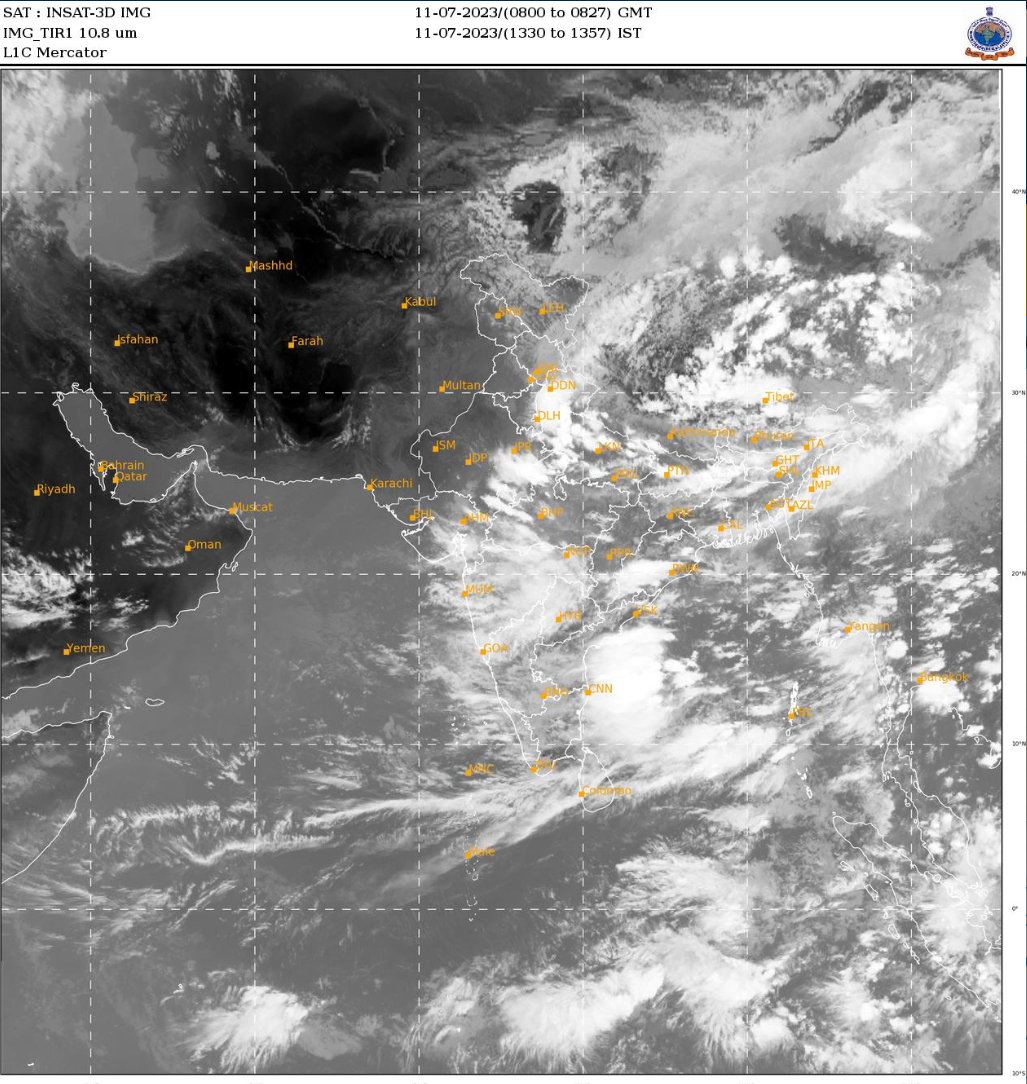Inputs by Shreya Tibrewal
Monsoon is the season which sustains agriculture in India. It replenishes all the water reservoirs, the entire rain-fed drainage system of peninsular India, and also recharges the ground water of the country.
All the rivers in peninsular India (south of Vindhyas and Satpuras) are rain-fed. This means that they depend on the annual monsoons to replenish their water supply.
India has always experienced heavy rainfall in the months of July and August. Strong monsoon rains have flooded and overflowed rivers like the Yamuna. Some states have experienced flooding too.

Heavy rains in several parts of Gujarat have created a flood-like situation. The state has experienced 32 mm of average rainfall in the last 24 hours. The India Meteorological Department (IMD) forecasted strong rains across isolated areas of southern Gujarat and Saurashtra until Monday morning.

Monsoon rains have been heavy at many places in Punjab like Chandigarh. Chandigarh has recorded 509mm rainfall during the past three days, and a few roads were filled with rainwater. This is 50% (half) of the annual rainfall in Chandigarh.
Haryana has also experienced heavy rainfall for the past couple of days. Mohali, Rupnagar, Panchkula and Ambala are some of the worst-hit districts in the two states. Because of the heavy rainfall, Haryana has released over 1 lakh cubic centimeters of water from its Hathnikund barrage into River Yamuna. This was done to avoid flooding, and in turn, led to a flood warning in Delhi, which is downstream from Haryana.
Downstream: A place that is further down in the route of a river. Upstream is something that is closer to the source.
Due to constant rainfall, the Yamuna river has crossed the 204.5-metre warning mark. The water level is expected to reach 205.5 metres between 10 a.m. and 12 p.m. on Tuesday, crossing the danger mark of 205.33 metres. Around 37,000 people live in low-lying areas near the river in Delhi that are considered at risk of flooding and evacuation has begun in Delhi.
The Delhi management had issued a flood warning on Sunday in response to rising water levels and started the process of moving people living near riverbanks to safer regions. The State Disaster Response Force (SDRF) is on notice and ready to deal with any type of disaster, and National Disaster Response Force (NDRF) groups have also been sent. The Indian Army is additionally placed on high alert.
Landslides were also noticed in Himachal Pradesh, Uttarakhand, and Gujarat. Landslides in the Chamoli district blocked the Badrinath National Highway.
The Amarnath Yatra has been suspended due to the rains. The high-altitude temples of Kedarnath and Badrinath are also closed to devotees at the moment.
In South India, coastal Karnataka has reported flooding and closure of state and national highways. Many dams have opened their reservoirs to avoid flooding.
What are reservoirs?
Dams are built on rivers to store water. The large man-made pits in which water is stored are called reservoirs. When it rains too much, the reservoirs tend to overflow. This leads to a flood situation in the nearby villages. Therefore, at such times, dams release water into the river, allowing it to flow downstream and into the sea. If there is enough water conservation infrastructure, this water can be conserved for the coming year.
In Assam, the flood situation continues.
India now reports a 10% excess rainfall. This figure was 8% deficient one week ago.
The flooding is likely to continue for a few more days. Caution is advised.
All images from Met Department of India. Featured image is the satellite image at the time of publishing this report.

